Throwing Great Pottery Parties for Kids
Throwing a pottery party for kids is not just about molding clay; it’s about shaping memories that last a lifetime. Imagine the laughter, the creativity, and the joy that fills the air as children dive into the world of pottery. It’s a fantastic way to encourage imagination and teamwork, allowing kids to express themselves while having a blast. Whether it’s for a birthday, a playdate, or just a fun weekend activity, a pottery party can be a unique experience that combines art and fun. So, let’s delve into how to organize an engaging and creative pottery party that will leave your little guests buzzing with excitement!
When it comes to organizing a pottery party, the venue can make or break the experience. You want a space that is not only spacious enough for kids to move around but also accessible and safe. Picture a vibrant room filled with colorful decorations, ample tables for crafting, and plenty of natural light to inspire creativity. You might consider options like:
- Community centers with art rooms
- Your backyard or garden for an outdoor experience
- Local pottery studios that offer party packages
Each choice comes with its own vibe and atmosphere, so think about what will best suit the age group and number of kids attending. A cozy, well-lit space will help your young artists feel comfortable and ready to unleash their creativity!
Gathering the right supplies is crucial for a smooth pottery party. You don’t want to be running around last minute trying to find materials! Here’s a quick checklist of essential items you’ll need:
- Different types of clay
- Pottery tools (rollers, sculpting tools, etc.)
- Aprons or old shirts to protect clothing
- Safety goggles for eye protection
- Sponges and water for smoothing
Having these supplies ready will ensure that the kids can dive straight into the fun without any hiccups. Plus, it’s a great idea to have some extra materials on hand in case of accidents or unexpected creative bursts!
Understanding the different types of clay available can help you choose the best option for your party. Each type has its unique properties, making some more suitable for kids than others. Here are a couple of popular choices:
Air-dry clay is an excellent choice for kids' pottery projects, as it requires no kiln firing. This type of clay dries naturally in the air, which means less hassle for you and more fun for the kids. It’s easy to work with and can be painted once dry, allowing for a beautiful finish. Plus, there’s no need for special equipment, making it a convenient option for home parties!
Polymer clay offers vibrant colors and versatility, making it a popular option for children. This type of clay can be molded into various shapes and then baked in a regular oven to harden. It’s perfect for creating intricate designs and small decorative pieces. Kids love the endless possibilities, and it opens up a whole new world of creativity!
Having the right tools can enhance the pottery-making experience. Essential tools include rolling pins, sculpting tools, and cutting wires. Each tool serves a specific purpose, helping kids to create their masterpieces with ease and confidence. For instance, a rolling pin can help flatten the clay, while sculpting tools can add intricate details. Make sure to demonstrate how to use each tool safely to keep the creative process fun and secure!
Inspiration is vital for a successful pottery party. You want the kids to leave feeling proud of their creations! Here are some fun and creative project ideas that kids can tackle:
Creating functional pottery items can be both fun and practical. Imagine the excitement on a child's face when they see their very own mug or bowl! Projects like these allow kids to personalize their creations, making them even more special. They can paint their designs, choose colors, and even add their names, resulting in unique keepsakes they will cherish.
Encouraging kids to make decorative pottery allows for creative freedom. From whimsical sculptures to colorful ornaments, the possibilities are endless! Kids can let their imaginations run wild, creating pieces that reflect their personalities. Plus, these decorative items can brighten up their rooms, serving as a constant reminder of their fun pottery experience!
Incorporating games and activities can make the pottery party more interactive. Consider organizing pottery relay races or artistic challenges. These activities not only keep kids entertained but also foster teamwork and creativity.
Pottery relay races can add excitement to the party. Divide the kids into teams and set up a fun relay where they must pass a clay ball from one teammate to another. This encourages teamwork and adds a competitive edge to the day!
Setting up artistic challenges encourages creativity and problem-solving. Challenge the kids to create a piece using only specific colors or to make a sculpture inspired by nature. These prompts can inspire them to think outside the box while working on their pottery projects.
Safety should always be a priority during pottery parties. Make sure to establish some ground rules before diving into the creative process. Here are some essential safety tips to ensure a secure and enjoyable experience for all participants:
Teaching kids how to use pottery tools safely is crucial. Provide clear guidelines on proper tool usage and the importance of supervision during the creative process. Encourage them to ask for help if they’re unsure about using a tool, fostering a safe environment where they can learn and create.
Proper handling of clay and materials is vital for safety. Discuss best practices for managing supplies to prevent accidents. For instance, remind kids to keep their work areas tidy and to be cautious when sharing tools. This not only ensures a positive experience but also teaches them responsibility in their creative endeavors.
Q: What age group is suitable for pottery parties?
A: Pottery parties can be tailored for various age groups, typically starting from ages 5 and up. Just ensure that the projects are age-appropriate!
Q: How long should a pottery party last?
A: A pottery party usually lasts between 2 to 3 hours, allowing enough time for projects, games, and clean-up.
Q: Do I need to provide food and drinks?
A: While not mandatory, providing snacks and drinks can enhance the experience and keep the kids energized during the activities!

Choosing the Right Venue
When it comes to organizing a pottery party for kids, one of the most important aspects is choosing the right venue. Imagine the excitement on their faces as they step into a vibrant space filled with colorful clay and creative possibilities! To ensure that the party goes off without a hitch, several factors should be taken into account. First and foremost, you'll want to consider the space. Is there enough room for all the kids to move around comfortably? Pottery can get a bit messy, so having ample space will allow them to work on their projects without feeling cramped.
Next, think about accessibility. Is the venue easy to get to for both you and the parents? If you’re hosting at a local community center or your home, make sure it’s in a location that’s convenient for everyone involved. Additionally, consider the ambiance of the space. A bright, cheerful environment can significantly enhance the mood of the party. Look for venues with good lighting and maybe even some artistic decor to inspire the kids as they create their masterpieces.
Another important factor is facilities. Does the venue have access to restrooms? Are there tables and chairs available for the kids to work on? If you're using a home space, you might need to arrange for extra seating or even a few folding tables to accommodate all the budding artists. Also, think about clean-up—having easy-to-clean surfaces can save you a lot of time after the party is over. You might even want to consider a venue that has outdoor space, allowing for some fresh air and a change of scenery while they work.
Lastly, don't forget about the budget. While some venues might be free, others could charge a fee. It’s essential to find a balance between a space that meets your needs and one that fits within your budget. You might even be surprised by what local parks or community centers offer at minimal costs. Remember, the goal is to create a fun and engaging atmosphere where creativity can flourish!
In summary, choosing the right venue for your pottery party involves considering space, accessibility, ambiance, facilities, and budget. By paying attention to these details, you can set the stage for a memorable and enjoyable experience that encourages creativity and teamwork among the kids.
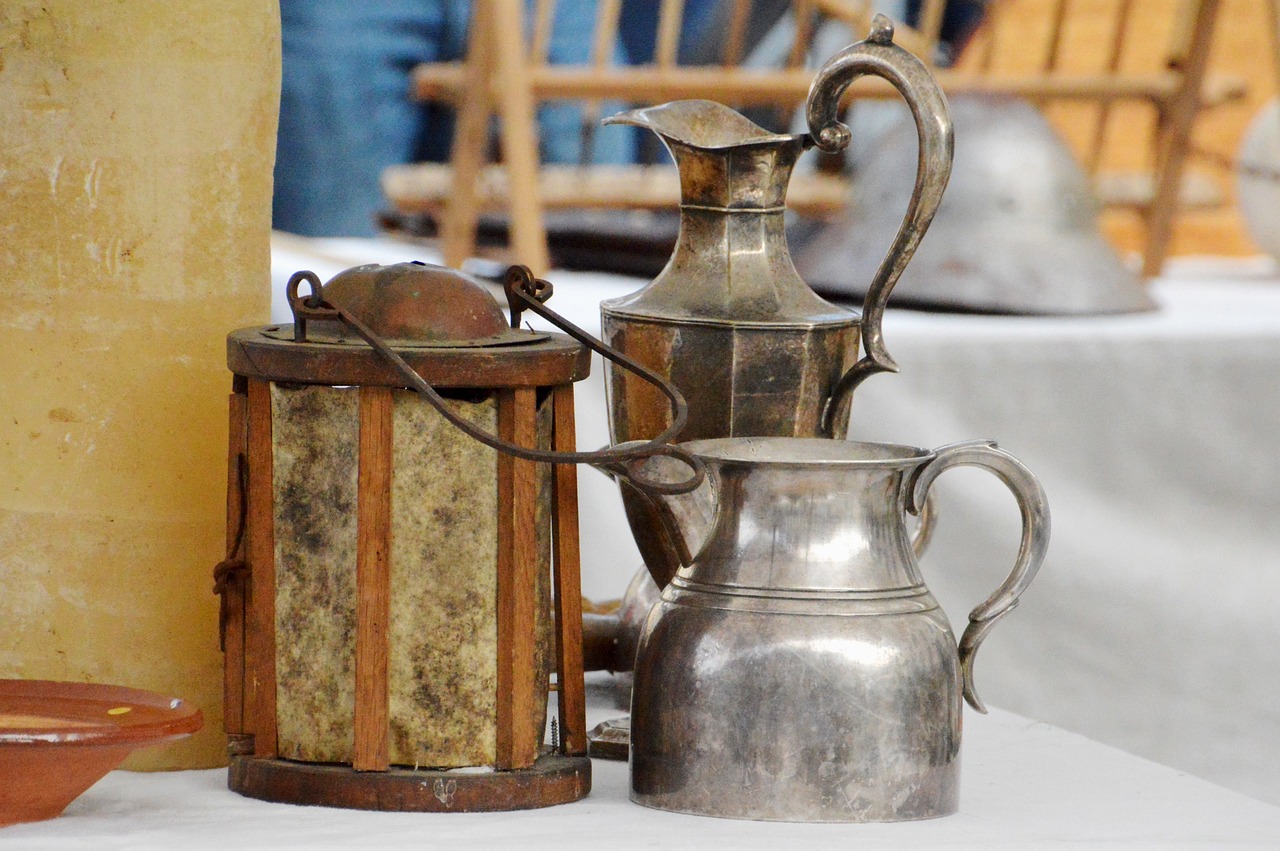
Essential Pottery Supplies
When it comes to throwing a memorable pottery party for kids, gathering the right supplies is absolutely crucial. Imagine a room filled with laughter and creativity, where children can express themselves through their art. To make this vision a reality, you need to ensure that you have all the essential pottery supplies on hand. This not only guarantees a smooth experience but also keeps the little ones engaged and excited about their projects.
First and foremost, you'll need clay. Different types of clay are available, and choosing the right one can significantly impact the kids' enjoyment and success. For instance, air-dry clay is an excellent option since it doesn't require any special equipment like a kiln. This means that kids can take their creations home the same day without the wait! On the other hand, polymer clay is a colorful and versatile choice that allows for endless creativity. Each type of clay has its own unique properties, so having a variety can inspire different projects.
Next up are the tools. You will need a selection of pottery tools to help the kids shape and refine their creations. Essential tools include rolling pins, sculpting tools, and clay cutters. These tools not only make the process easier but also allow the children to explore their artistic abilities. Additionally, consider providing some safety gear such as aprons and gloves. While pottery is a fun activity, safety should always be a priority. A simple apron can protect their clothes from clay stains, while gloves can keep their hands clean and safe from any materials they might be sensitive to.
To keep the workspace organized, setting up a pottery station is a fantastic idea. This could include tables covered with plastic or old newspapers to catch any mess. Having a dedicated area for supplies will help the kids stay focused and make the clean-up process much easier. Don't forget to provide plenty of water for cleaning hands and tools, as well as some sponges and paper towels for quick clean-ups.
Lastly, consider adding some decorative materials like paints, glazes, and embellishments. Once the kids have shaped their pottery, they will want to personalize their creations. Providing a variety of colors and textures will ignite their imagination and allow them to express their unique styles. Just think about how excited they will be to show off their masterpieces!
In summary, the essential pottery supplies for a successful kids' pottery party include:
- Various types of clay (air-dry and polymer)
- Pottery tools (rolling pins, sculpting tools, clay cutters)
- Safety gear (aprons and gloves)
- Organizational supplies (tables, plastic covers, sponges)
- Decorative materials (paints, glazes, embellishments)
With these supplies at your disposal, you are well on your way to hosting a pottery party that is not only fun but also educational. The kids will leave with a sense of accomplishment and a newfound appreciation for the art of pottery!
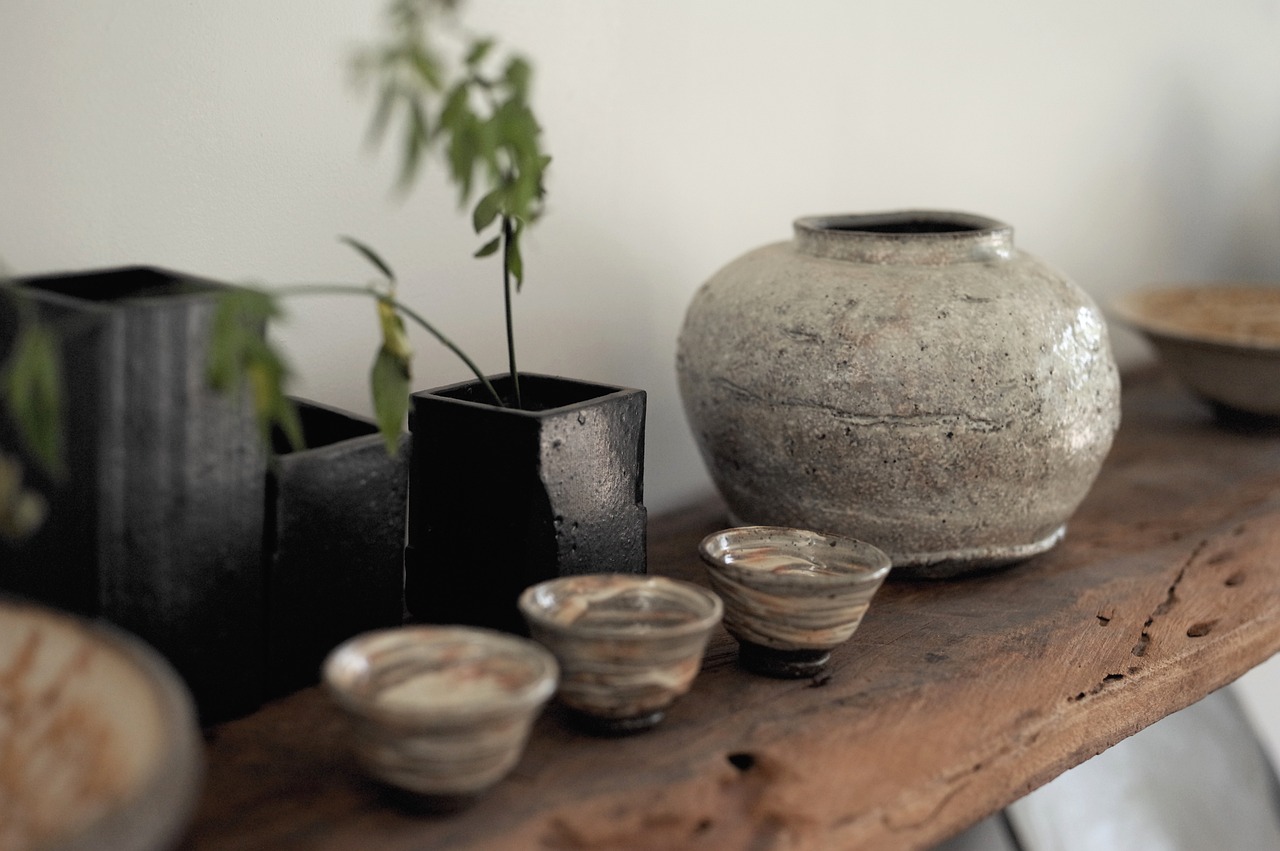
Types of Clay
When it comes to pottery, choosing the right type of clay can make all the difference, especially for kids. Not all clays are created equal, and understanding the various options available can help you select the best one for your pottery party. The right clay can enhance creativity, ensure safety, and lead to a more enjoyable crafting experience.
There are several types of clay that are suitable for children, each with its unique properties and benefits. Here’s a brief overview of the most popular types:
- Air-Dry Clay: This type of clay is incredibly user-friendly, making it an excellent choice for kids. It dries naturally in the air, eliminating the need for a kiln, which can be a significant advantage in a home or party setting. Kids can create their masterpieces and watch them dry without any complicated processes.
- Polymer Clay: Known for its vibrant colors and versatility, polymer clay is another fantastic option for children's pottery projects. It can be molded into various shapes and designs, and once the kids are done, it can be baked in a regular oven to harden. This allows for a wide range of creative possibilities, from jewelry to figurines.
- Stoneware Clay: While this type of clay is generally more suited for older children or adults, it's worth mentioning. Stoneware requires kiln firing and is known for its durability and ability to hold heat. If you're hosting a more advanced pottery session, this could be an exciting option.
Choosing the right clay can depend on several factors, including the age of the children, their skill level, and the type of projects you want to undertake. For younger kids, air-dry clay is often the best choice due to its ease of use and safety. On the other hand, if you have older children who are eager to experiment, polymer clay can offer a more challenging and rewarding experience.
In summary, understanding the types of clay available is crucial for a successful pottery party. By selecting the right clay, you can ensure that the kids not only have a fun time but also walk away with beautiful creations they can be proud of. So, whether they are molding their first clay figures or crafting intricate designs, the right type of clay will set the stage for a memorable and creative experience.
Q: What is the best type of clay for beginners?
A: Air-dry clay is highly recommended for beginners, especially children, as it doesn’t require any special equipment or firing process.
Q: Can polymer clay be reused?
A: Polymer clay can be reused if it hasn't been baked yet. Once baked, it hardens permanently.
Q: Is air-dry clay waterproof?
A: Air-dry clay is not waterproof, but it can be sealed with a varnish to provide some water resistance.
Q: How long does it take for air-dry clay to dry?
A: Air-dry clay typically takes 24 to 72 hours to dry completely, depending on the thickness of the project and the humidity in the air.

Air-Dry Clay
is an incredible option for kids' pottery projects, primarily because it eliminates the need for a kiln. Imagine a world where children can unleash their creativity without the worry of complex firing processes! This type of clay dries naturally in the air, making it accessible and user-friendly for young artists. The simplicity of air-dry clay allows kids to focus on their artistic expression rather than the technical aspects of pottery making.
One of the most appealing features of air-dry clay is its versatility. It comes in various colors and textures, allowing children to explore different artistic styles. Whether they want to create vibrant sculptures or subtle, earthy pieces, air-dry clay can accommodate their vision. Additionally, it can be painted or decorated once dry, providing even more opportunities for personalization. This means that after sculpting, kids can bring their creations to life with paints, markers, or other decorative materials.
When working with air-dry clay, it's essential to keep a few tips in mind to ensure a successful experience:
- Moisture Control: Keep the clay covered when not in use to prevent it from drying out. A damp cloth can help maintain the right moisture level.
- Drying Time: Allow sufficient time for the pieces to dry completely, which can take anywhere from 24 hours to several days, depending on the thickness.
- Finishing Touches: Once dry, kids can sand the surface lightly for a smoother finish and then paint or seal their creations for added durability.
As you prepare for a pottery party, consider incorporating air-dry clay into your activities. It not only fosters creativity but also allows for instant gratification, as kids can take home their creations without the wait associated with traditional pottery methods. With air-dry clay, the only limit is their imagination!
Q: Can air-dry clay be used for outdoor projects?
A: While air-dry clay is suitable for many projects, it is not waterproof. If a project will be exposed to the elements, it is advisable to seal it with a waterproof varnish or to use it for indoor decorations.
Q: How long does it take for air-dry clay to dry?
A: The drying time can vary based on the thickness of the piece and the humidity of the environment. Generally, thinner pieces may dry in 24 hours, while thicker ones can take several days.
Q: Can air-dry clay be painted?
A: Absolutely! Once the clay is fully dry, it can be painted with acrylic paints, markers, or other decorative materials to enhance its appearance.
Q: Is air-dry clay safe for kids?
A: Yes, air-dry clay is non-toxic and safe for children. However, it's always a good idea to supervise kids while they are working with any materials.
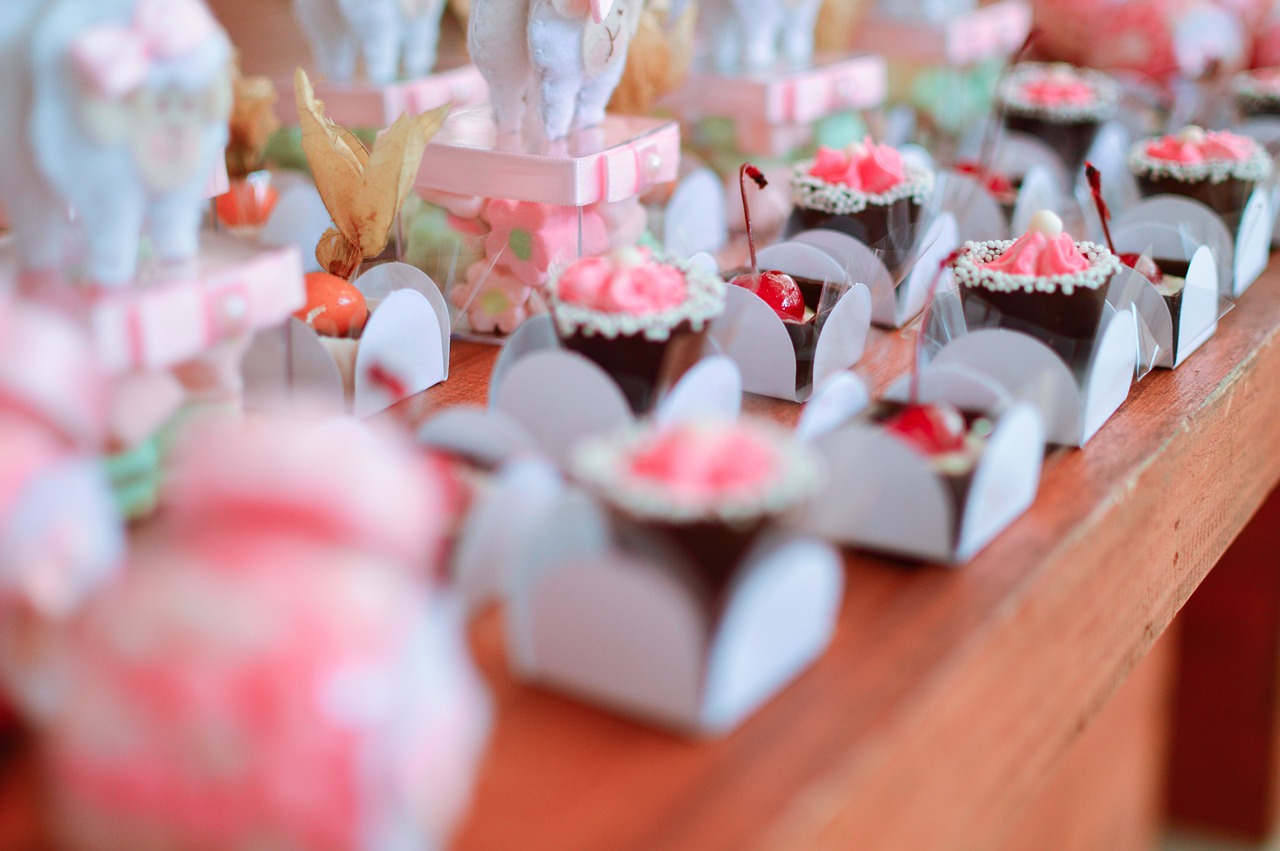
Polymer Clay
Polymer clay is a fantastic medium for kids, offering a world of vibrant colors and endless possibilities. It’s like a box of crayons that you can mold into anything you can imagine! This type of clay is particularly appealing because it remains pliable until it is baked in an oven, which means kids can take their time crafting their masterpieces without the pressure of immediate drying. Once baked, the creations become durable and can be used as decorative items, jewelry, or even toys. Imagine the joy on a child's face when they see their colorful creations transformed into solid pieces!
One of the standout features of polymer clay is its versatility. It comes in a wide array of colors, and some brands even offer metallic and glow-in-the-dark options. This means that the kids can not only express their creativity but also experiment with different textures and finishes. For instance, they can create marbled effects by mixing different colors together or use molds to shape their clay into fun forms. The possibilities are truly endless!
When working with polymer clay, there are a few tips and tricks that can enhance the experience:
- Conditioning the Clay: Before starting, it's essential to knead the clay to make it soft and workable. This process is similar to warming up dough before baking and helps to achieve a smoother finish.
- Using Tools: Kids can use simple tools like toothpicks, plastic knives, and even cookie cutters to create intricate designs. These tools help add details and can make the process even more fun.
- Baking: Once the creations are complete, they need to be baked according to the manufacturer's instructions. This step is crucial as it hardens the clay, making it sturdy and ready for display!
Moreover, polymer clay is non-toxic, making it a safe choice for children. However, adult supervision is recommended during the baking process to ensure safety. This way, kids can enjoy their creative journey while parents handle the oven. In summary, polymer clay is not just a craft material; it's an avenue for children to explore their artistic potential, learn new skills, and create lasting memories. So why not gather some polymer clay and let the kids' imaginations run wild?
Q1: Is polymer clay safe for children?
A1: Yes, polymer clay is non-toxic and safe for children to use. However, adult supervision is recommended during the baking process.
Q2: Can polymer clay be reused?
A2: Once baked, polymer clay cannot be reused. However, unbaked clay can be stored and used later, as long as it's kept in an airtight container.
Q3: How long does it take to bake polymer clay?
A3: Baking times can vary depending on the brand and thickness of the clay, but it typically ranges from 15 to 30 minutes at 265°F to 275°F (130°C to 135°C).
Q4: What can I make with polymer clay?
A4: The possibilities are endless! Kids can create jewelry, figurines, ornaments, and even functional items like buttons or magnets.
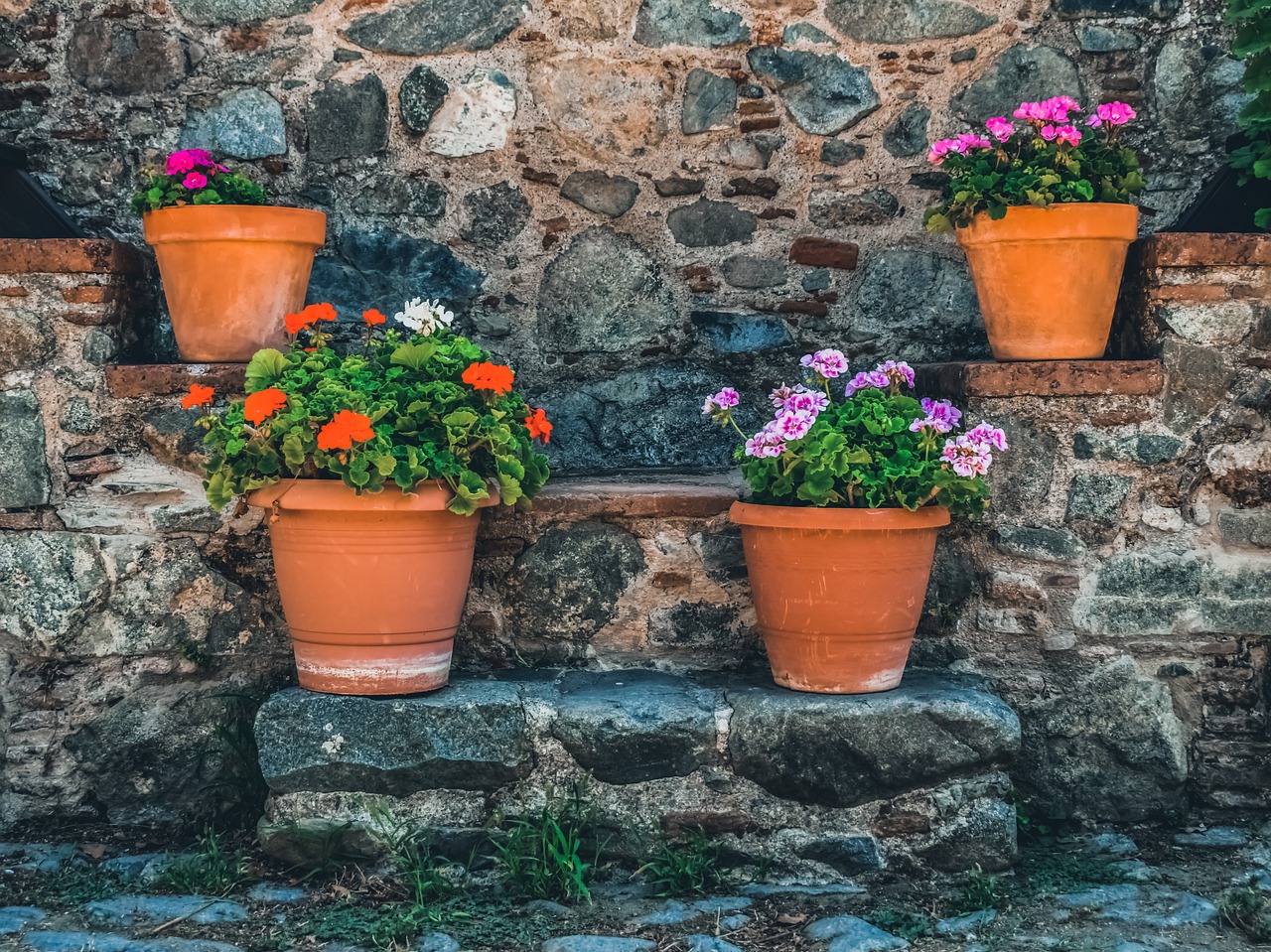
Pottery Tools and Equipment
When it comes to hosting a successful pottery party for kids, having the right tools and equipment is essential. Imagine setting the stage for a creative explosion where children can mold, shape, and express their artistic flair! The right tools not only enhance the experience but also empower kids to create with confidence. So, what do you need to ensure that your pottery party is a hit?
First off, let’s talk about the basic pottery tools that every budding artist should have at their disposal. These include:
- Pottery Wheel: If your venue allows, a pottery wheel can be a thrilling addition. Kids will love the hands-on experience of shaping clay as it spins.
- Rolling Pins: Perfect for flattening clay, rolling pins are a must-have to create a smooth surface for projects.
- Clay Cutters: These handy tools come in various shapes and sizes, allowing kids to cut out fun designs easily.
- Wire Cutters: Essential for slicing through large blocks of clay or removing pieces from the wheel.
- Sponges and Water Containers: Keeping clay moist is crucial, and sponges help with smoothing surfaces.
In addition to these basics, consider incorporating some specialized tools that can really elevate the kids' projects:
- Texture Tools: These can add unique patterns to the clay, making each piece truly one-of-a-kind.
- Stamping Tools: Perfect for adding fun designs or initials, stamping tools will encourage personalization.
- Glazing Brushes: If you plan to add a glaze finish, brushes will be necessary for applying color and shine.
Now, while tools are vital, equipment plays an equally important role in ensuring a successful pottery party. Here are some key items to have on hand:
| Equipment | Description |
|---|---|
| Work Tables | Sturdy surfaces where kids can work on their projects comfortably. |
| Aprons | Protective gear to keep clothes clean while kids dive into their creative mess. |
| Storage Bins | For organizing clay, tools, and finished projects, making cleanup a breeze. |
| Safety Gear | Goggles and gloves can protect little hands and eyes during the creative process. |
Ultimately, the goal is to create a fun and safe environment where kids can unleash their creativity. By providing the right tools and equipment, you set the stage for a memorable pottery experience. Just imagine the joy on their faces as they craft unique pieces that reflect their personality! With the right setup, your pottery party will not only be a fun event but also a fantastic opportunity for kids to learn and grow in their artistic journey.
Q: What age group is suitable for pottery parties?
A: Pottery parties can be tailored for various age groups, but they are generally best suited for children aged 5 and up. Ensure that the activities are age-appropriate and safe.
Q: Do I need prior pottery experience to host a pottery party?
A: Not at all! While having some knowledge can be helpful, you can easily guide the kids through simple projects. Just focus on fun and creativity!
Q: How long should a pottery party last?
A: A typical pottery party lasts about 2 to 3 hours, allowing enough time for projects and activities without overwhelming the kids.
Q: What should I do with the finished pottery?
A: If using air-dry clay, allow the pieces to dry completely before taking them home. If using kiln-fired clay, you may need to arrange for firing after the party.

Creative Project Ideas
When it comes to throwing a pottery party for kids, the key to keeping their creative juices flowing lies in offering a variety of engaging project ideas. Kids love to express themselves, and pottery provides a unique medium for them to do just that. Think of each project as a canvas waiting to be transformed into something spectacular! From functional items that can be used in everyday life to imaginative decorative pieces, the possibilities are endless. The excitement of shaping clay with their own hands can spark a sense of accomplishment and pride in the young artists.
One of the most enjoyable aspects of pottery is creating functional pottery. Imagine the joy on a child's face when they craft their very own mug or bowl! Not only are these items practical, but they also allow for personalization. Kids can use their favorite colors, shapes, and designs to make something truly unique. For instance, a simple bowl can be transformed into a masterpiece with a splash of vibrant glazes or fun patterns. Encourage them to think about how they can use their creations at home, whether it’s for snacks, as a pencil holder, or even as a gift for a family member. The thrill of seeing their work in action can be incredibly rewarding.
On the other hand, decorative pieces offer a chance for pure artistic expression. This is where the kids can really let their imaginations run wild! They can create anything from whimsical sculptures to beautiful ornaments that can adorn their rooms. For example, they might choose to create a friendly animal figure or a funky abstract piece that reflects their personality. The beauty of decorative pottery is that there are no rules—just freedom to explore and create. You could even set up a mini-exhibit at the end of the party where each child can showcase their favorite piece, turning the event into a mini art gallery!
To further enhance the creative experience, consider introducing a few themed projects. For instance, you could have a "Nature Day" where kids create pottery inspired by the great outdoors. They could mold flowers, leaves, or even animals, using natural textures and colors to bring their creations to life. Another idea could be a "Fantasy Theme," where they can design magical creatures or enchanted objects. This approach not only makes the projects more exciting but also encourages storytelling and imagination.
Additionally, incorporating a collaborative project can foster teamwork and camaraderie among the kids. Imagine a large mural made of clay tiles, where each child contributes their own unique tile design. This could become a fantastic keepsake for the group, symbolizing their shared creativity and fun. The final piece can be displayed in a common area at home or school, serving as a reminder of the wonderful time they had together.
Ultimately, the goal is to create an environment where kids feel comfortable exploring their creativity. By providing a range of project ideas, you can ensure that every child finds something that excites them. Remember, the journey of making pottery is just as important as the final product, so encourage them to enjoy the process and have fun!
- What age group is suitable for pottery parties? Pottery parties can be tailored for various age groups, but they are generally best suited for children aged 5 and up, depending on the complexity of the projects.
- Do I need to have experience in pottery to host a party? No, you don’t need to be an expert! As long as you provide guidance and basic instructions, kids can have a blast experimenting with pottery.
- How long should a pottery party last? A typical pottery party can last anywhere from 2 to 3 hours, allowing enough time for setup, crafting, and cleanup.
- What should I do with the finished pottery pieces? Depending on the type of clay used, you may need to fire the pieces in a kiln. If using air-dry clay, simply allow the pieces to dry thoroughly before taking them home.

Functional Pottery
Creating items is not only a delightful way for kids to express their creativity, but it also results in practical objects they can use in their everyday lives. Imagine the joy on a child's face when they craft their very own mug or bowl, which they can proudly showcase at home or gift to a loved one! Functional pottery projects encourage children to think about form and function, making them an engaging blend of art and utility.
When planning these projects, consider starting with simple items that are easy to shape and personalize. For instance, a handmade mug can be a fantastic beginner project. Kids can learn to roll out clay, shape the mug, and even add their own unique designs using stamps or carving tools. Not only does this foster their artistic skills, but it also introduces them to basic pottery techniques. Plus, they will love sipping their favorite drinks from a mug they created themselves!
Another fun project is creating bowls. Kids can experiment with different sizes and shapes, and they can decorate their bowls using vibrant glazes or paints. This project allows for a lot of creative freedom, as they can choose to make a bowl for snacks, a decorative piece for their room, or even a gift for a family member. The satisfaction derived from transforming a lump of clay into a beautiful, functional piece is immeasurable.
Here are a few more ideas for functional pottery projects that can spark excitement:
- Plant Pots: Kids can design their own plant pots, which can be used to house their favorite plants or flowers, adding a touch of greenery to their space.
- Coasters: Making personalized coasters can be a fun project, allowing kids to experiment with different textures and colors while creating something useful.
- Pencil Holders: A simple yet effective project, pencil holders can help organize their workspace while showcasing their artistic flair.
As you guide the kids through these projects, encourage them to think about how they can personalize their creations. Using various tools and techniques, they can add their names, favorite patterns, or even symbols that represent their personality. This not only makes the pottery more special but also instills a sense of ownership and pride in their work.
Moreover, functional pottery projects can serve as excellent conversation starters. When kids present their creations to family and friends, they have the opportunity to share the story behind their work, the techniques they learned, and the fun they had during the process. It's a wonderful way to foster communication skills and build confidence in their artistic abilities.
In conclusion, functional pottery is a rewarding avenue for kids to explore their creativity while producing items that are not only beautiful but also useful. By engaging in these projects, children can learn valuable skills, express themselves artistically, and create lasting memories. So, gather those supplies and get ready for a pottery party that will leave everyone with a smile and a unique piece of art!
Q: What age group is suitable for pottery parties?
A: Pottery parties can be tailored for various age groups, typically starting from ages 5 and up. It's important to adjust the complexity of the projects according to the children's age and skill level.
Q: Do I need to have prior pottery experience to host a party?
A: No prior experience is necessary! As long as you're enthusiastic and prepared to guide the kids, you can lead a successful pottery party. Consider involving an experienced potter if you want additional support.
Q: What if the kids don't finish their projects during the party?
A: It's common for kids to take time to complete their projects. You can arrange for them to pick up their finished pieces after they have been fired (if using kiln clay) or provide instructions for them to finish at home (if using air-dry clay).
Q: How do I ensure safety during the pottery party?
A: Always supervise the children while they are using tools and materials. Provide clear instructions on how to handle the clay and tools safely. Make sure to have safety equipment like aprons and gloves available if necessary.
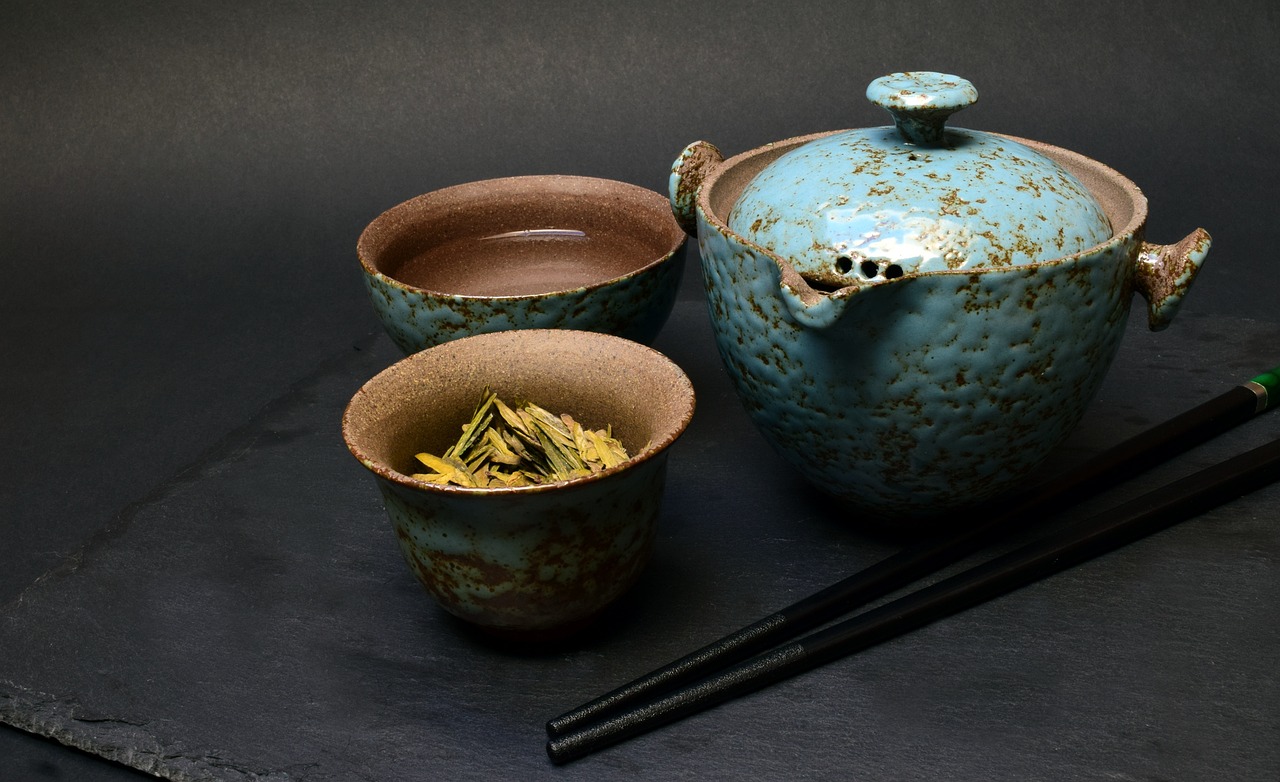
Decorative Pieces
Creating decorative pottery pieces is not just about molding clay; it's about unleashing the imagination and allowing kids to express their unique personalities. When children dive into the world of pottery, they can create stunning pieces that not only beautify their spaces but also serve as treasured memories of their creative journey. Imagine a child’s face lighting up as they sculpt a whimsical animal or a colorful vase that can brighten up any room!
To kickstart the creativity, consider guiding the kids through a few exciting project ideas. For instance, they can craft funny animal figurines, where they can explore various shapes and colors. Perhaps they want to create a themed planter that reflects their favorite character or hobby. The possibilities are endless! Here are some engaging ideas to inspire their creations:
- Fantasy Creatures: Unicorns, dragons, and fairies can come to life with just a bit of clay and imagination.
- Personalized Ornaments: Kids can create holiday decorations or gifts for family members, adding a personal touch that will be cherished.
- Colorful Wall Hangings: Encourage them to make tile-like pieces that can be painted and hung on walls, adding a splash of color to any space.
It’s essential to remind the kids that their decorative pieces don’t have to be perfect; the beauty lies in their creativity and the joy of the process. Each piece tells a story and carries a bit of the artist’s spirit. As they work, they’ll learn about textures, colors, and forms, which are fundamental aspects of art. Plus, they’ll develop fine motor skills and gain confidence in their artistic abilities!
Once the kids finish their masterpieces, a mini-exhibition can be a fantastic way to celebrate their hard work. Set up a display area where each child can showcase their creations. Not only does this encourage them to take pride in their work, but it also fosters a sense of community as they admire each other's efforts. Who knows, you might even inspire a budding artist or two!
In summary, decorative pottery pieces are an excellent way for kids to explore their artistic sides. With the right guidance and encouragement, they can create beautiful, one-of-a-kind items that they will cherish for years to come. So, gather your supplies, unleash the creativity, and let the kids’ imaginations run wild!
Q: What age is appropriate for kids to start pottery?
A: Generally, children as young as 5 can begin with simple clay projects. However, it's essential to consider the child's maturity and ability to follow instructions.
Q: Do we need a kiln for air-dry clay projects?
A: No, air-dry clay does not require a kiln. It hardens naturally, making it an excellent choice for kids' projects.
Q: How can we ensure a safe pottery experience for kids?
A: Always supervise children while they use tools, teach them proper handling techniques, and ensure that the workspace is free from hazards.
Q: Can kids paint their pottery projects?
A: Absolutely! Once the clay has dried, kids can paint their creations with acrylic paints or special pottery glazes for a vibrant finish.
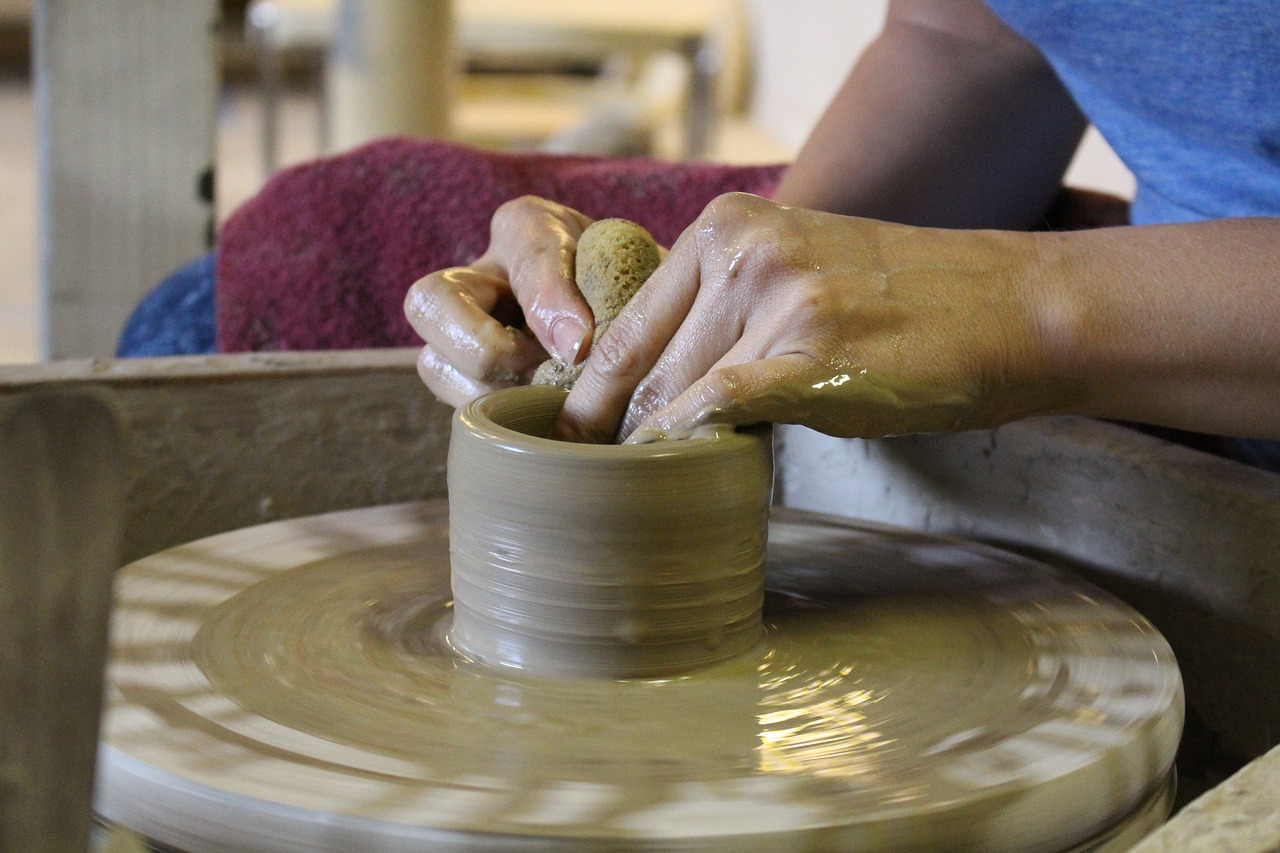
Engaging Activities and Games
When it comes to throwing a memorable pottery party for kids, incorporating can truly elevate the experience. Imagine the laughter and excitement as children create their masterpieces while participating in fun challenges! Not only do these activities keep the little ones entertained, but they also foster teamwork and creativity. Let's dive into some fantastic ideas that will make your pottery party an unforgettable event!
One of the most exhilarating activities you can introduce is the Pottery Relay Race. Picture this: kids divided into teams, racing against the clock to complete pottery tasks! Each team member has a specific role, whether it's shaping clay, painting a piece, or decorating it with fun designs. This not only promotes teamwork but also adds an element of friendly competition that keeps everyone on their toes. To organize the relay, set up a series of stations where each child must complete a task before passing the baton to the next teammate. The first team to finish all their tasks wins a small prize, which could be something simple yet exciting, like a pottery-themed sticker or a colorful paintbrush!
Another exciting option is to introduce Artistic Challenges. These challenges can be as simple or complex as you like, depending on the age group. For instance, you might challenge the kids to create a pottery item that represents their favorite animal or to design a piece inspired by nature. You could even set a timer to add a sense of urgency, pushing them to think creatively and quickly. What’s more, you can encourage the kids to share their creations and the stories behind them, which not only boosts their confidence but also enhances their communication skills.
In addition to these activities, consider incorporating some pottery-themed games that can be played during breaks or while waiting for materials to dry. For example, a game of Pottery Pictionary can be a hit! In this game, kids take turns drawing pottery items or tools on a whiteboard while their teammates guess what it is. Not only does this game spark creativity, but it also helps improve their drawing skills in a fun and relaxed environment.
To ensure a smooth flow of activities, it’s essential to have a well-planned schedule. Here’s a simple sample timeline for a pottery party:
| Time | Activity |
|---|---|
| 1:00 PM | Welcome and Introduction |
| 1:15 PM | Pottery Relay Race |
| 1:45 PM | Artistic Challenges |
| 2:15 PM | Snack Break & Pottery Pictionary |
| 2:45 PM | Creative Pottery Projects |
| 3:30 PM | Show and Tell |
By integrating these engaging activities and games into your pottery party, you’ll not only keep the kids entertained but also inspire them to express themselves creatively. Remember, the goal is to create a fun and interactive environment where children feel free to explore their artistic sides. So, gather those supplies, prepare for some laughter, and get ready to enjoy a day filled with creativity and joy!
Q1: How many children should I invite to a pottery party?
A1: It's best to keep the group size manageable, ideally between 8 to 12 children. This allows for more individual attention and a better overall experience.
Q2: What age group is suitable for a pottery party?
A2: Pottery parties can be tailored for various age groups, but they are particularly great for kids aged 5 to 12, as they can enjoy the creative process while developing fine motor skills.
Q3: Do I need to provide supervision during the pottery activities?
A3: Yes! Adult supervision is crucial to ensure safety, especially when using tools and materials. It also helps guide the kids through the projects and activities.
Q4: How can I make the pottery party educational?
A4: You can incorporate lessons about different types of clay, pottery techniques, and even the history of pottery. This adds an educational twist to the fun!
Q5: What should I do with the finished pottery pieces?
A5: You can let the pieces air-dry if you're using air-dry clay or arrange for them to be fired in a kiln if using traditional clay. Consider hosting a small exhibition where kids can showcase their work!
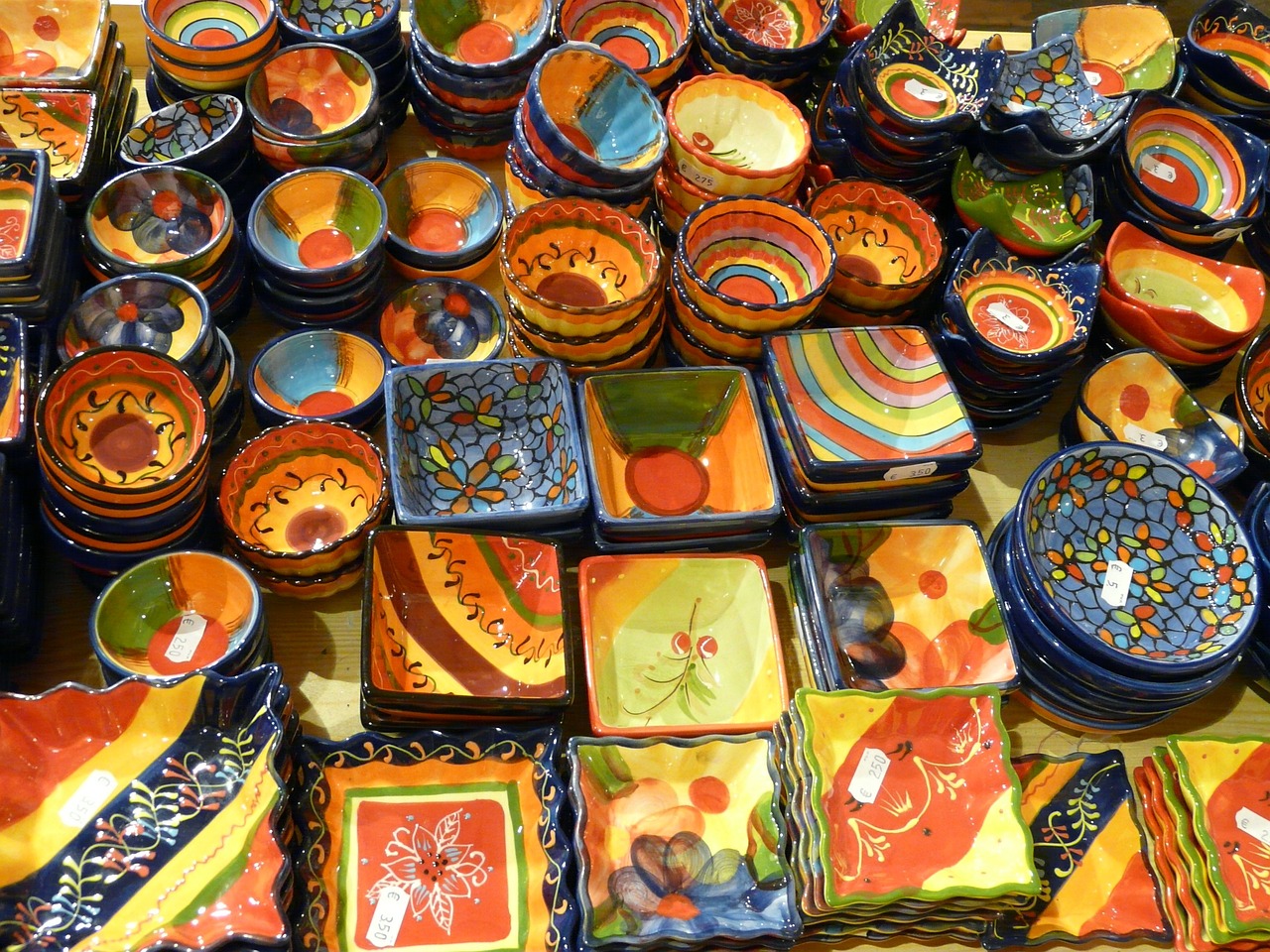
Pottery Relay Races
Pottery relay races are not just a fun twist on traditional games; they also foster teamwork and creativity among kids. Imagine the excitement as children dash from one station to another, each carrying a piece of clay or a pottery tool, all while trying to complete their tasks in record time! It’s an exhilarating way to blend physical activity with artistic expression, keeping the energy levels high and the laughter flowing.
To set up a pottery relay race, you’ll need to create several stations, each with a unique pottery-related task. Here’s a quick breakdown of how to organize it:
| Station | Task | Time Limit |
|---|---|---|
| Station 1 | Roll out a slab of clay | 1 minute |
| Station 2 | Shape a small bowl | 2 minutes |
| Station 3 | Decorate the bowl with stamps | 1 minute |
Each team can consist of 3-5 kids, and they will race against the clock to complete all the tasks at their respective stations. When one child finishes their task, they pass the clay or tool to the next teammate, who then dashes to the next station. This relay format not only encourages friendly competition but also allows the kids to learn from each other as they share techniques and ideas.
To add an extra layer of excitement, consider incorporating a few fun twists. For example, you could blindfold one team member while they try to shape their clay, relying on their teammates' verbal guidance. Or, you could introduce a 'mystery box' of tools that each team must use at a specific station, pushing their creativity to the limit. The possibilities are endless!
At the end of the race, celebrate everyone's efforts with a small award ceremony. You can give out fun certificates for 'Most Creative Bowl,' 'Fastest Team,' or even 'Best Team Spirit.' This not only boosts their confidence but also reinforces the idea that pottery is about joy and self-expression, rather than just competition.
Incorporating pottery relay races into your party not only enhances the overall experience but also creates lasting memories for the kids. It’s a fantastic way to mix art with play, ensuring that every child leaves with a smile on their face and perhaps a new passion for pottery!
- What age group is best for pottery relay races? Pottery relay races are suitable for children aged 5 and up, but you can adjust the tasks to fit younger participants as well.
- How many kids can participate in a relay race? Ideally, you should have at least 6 kids to make it fun, but you can easily accommodate larger groups by forming multiple teams.
- Do I need special equipment for the relay races? While basic pottery tools and clay are essential, you can use everyday items for fun twists, like blindfolds or mystery boxes.
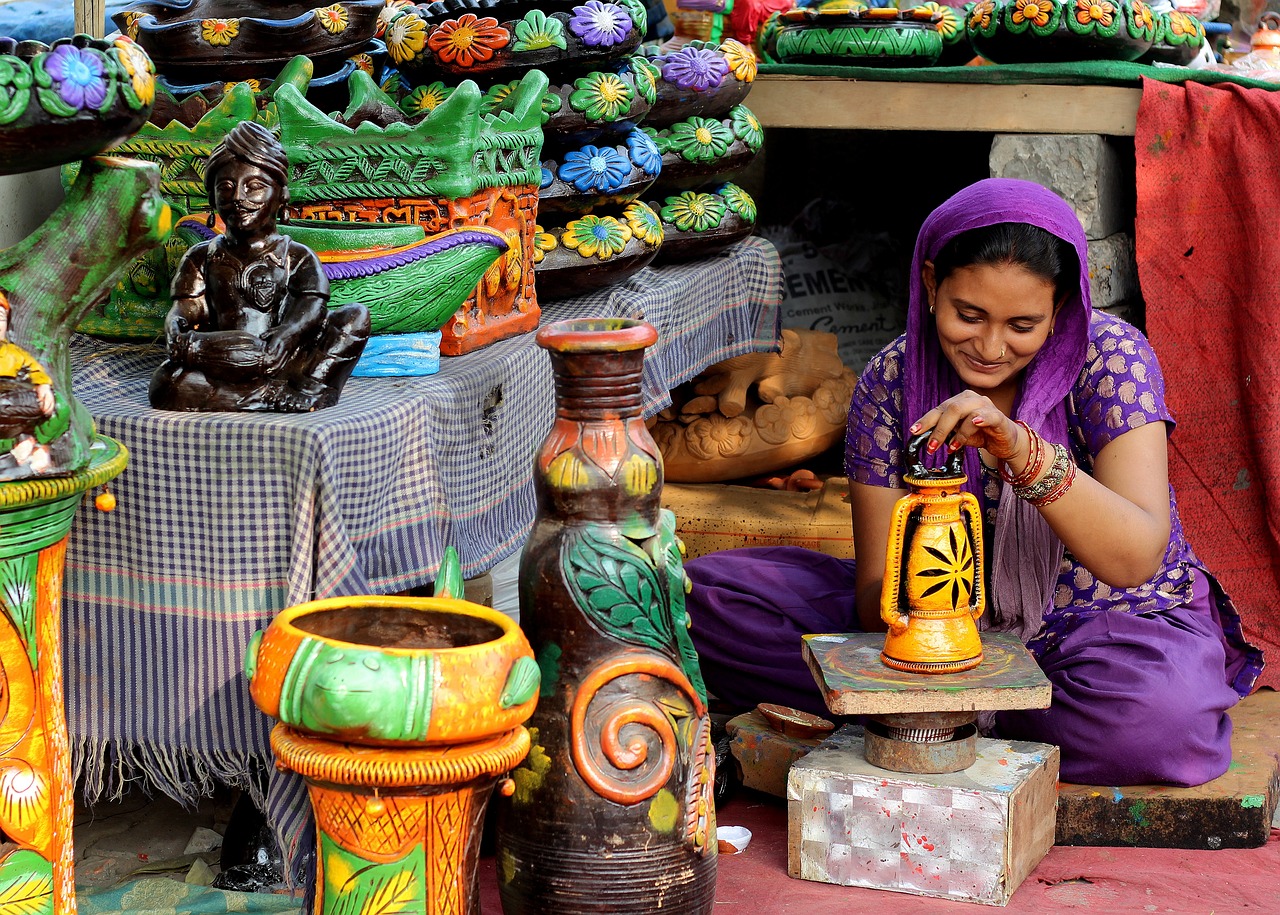
Artistic Challenges
Artistic challenges are a fantastic way to spark creativity and push the boundaries of imagination during a pottery party. Picture this: a room filled with laughter and excitement, where kids are not just molding clay, but also crafting stories and experiences through their creations. By introducing challenges, you can transform a simple pottery session into an exhilarating adventure that encourages kids to think outside the box. These challenges can range from time-limited projects to themed creations, and they can add a layer of excitement that keeps the energy high and the creative juices flowing.
One engaging idea is to set a timer for a specific project. For example, you could challenge the kids to create a pottery piece that represents their favorite animal within a 30-minute window. This not only encourages quick thinking but also allows them to make decisions on the fly, enhancing their problem-solving skills. Imagine the variety of animals that could emerge from this challenge—each piece unique and a reflection of the child's personality!
Another fun twist is to introduce a "mystery box" challenge. Fill a box with various materials and tools that the kids must incorporate into their pottery. This could include items like feathers, beads, or even small toys. The challenge? They must use at least three of the items in their final creation. This not only fosters creativity but also teaches them to innovate and adapt, skills that are invaluable in any artistic endeavor.
Incorporating friendly competition can also elevate the excitement. You can have a panel of judges—perhaps parents or older siblings—who can evaluate the finished pieces based on creativity, originality, and execution. This not only motivates the kids to put forth their best effort but also teaches them about constructive feedback and appreciation for others' work. Remember, the goal is to celebrate creativity, so every participant should feel like a winner!
To make things even more interesting, consider introducing themed challenges. For instance, a "holiday theme" where kids create pottery pieces inspired by upcoming holidays can be both fun and educational. They can learn about different cultural traditions while expressing their creativity. You might even host a mini-exhibition at the end of the party, where kids can showcase their work to family and friends. This not only boosts their confidence but also gives them a sense of accomplishment.
In summary, artistic challenges are an excellent way to enhance the pottery party experience. They encourage teamwork, foster creativity, and provide a platform for kids to express themselves in unique ways. By incorporating these challenges, you create an environment where imagination knows no bounds, and every child leaves with not just a piece of pottery, but a memorable experience. So, are you ready to unleash the artistic potential of your little ones?
Q: What age group is suitable for pottery parties?
A: Pottery parties can be tailored for various age groups, typically starting from around 5 years old. However, it's important to consider the complexity of the projects and the safety of the tools used.
Q: How long should a pottery party last?
A: A pottery party usually lasts between 1.5 to 3 hours, depending on the number of activities planned and the age of the participants. This allows enough time for instruction, creation, and cleanup.
Q: Do I need to provide all the materials?
A: Yes, as the host, it's your responsibility to gather all necessary materials, including clay, tools, and any additional supplies for artistic challenges. Ensure you have enough for all participants.
Q: What if a child has allergies?
A: Always check with parents beforehand regarding any allergies or sensitivities. Opt for non-toxic, allergy-friendly materials whenever possible to ensure a safe environment for all kids.
Q: Can pottery parties be held outdoors?
A: Absolutely! Outdoor settings can be fantastic for pottery parties, especially in nice weather. Just make sure to have a shaded area and a flat surface for working.
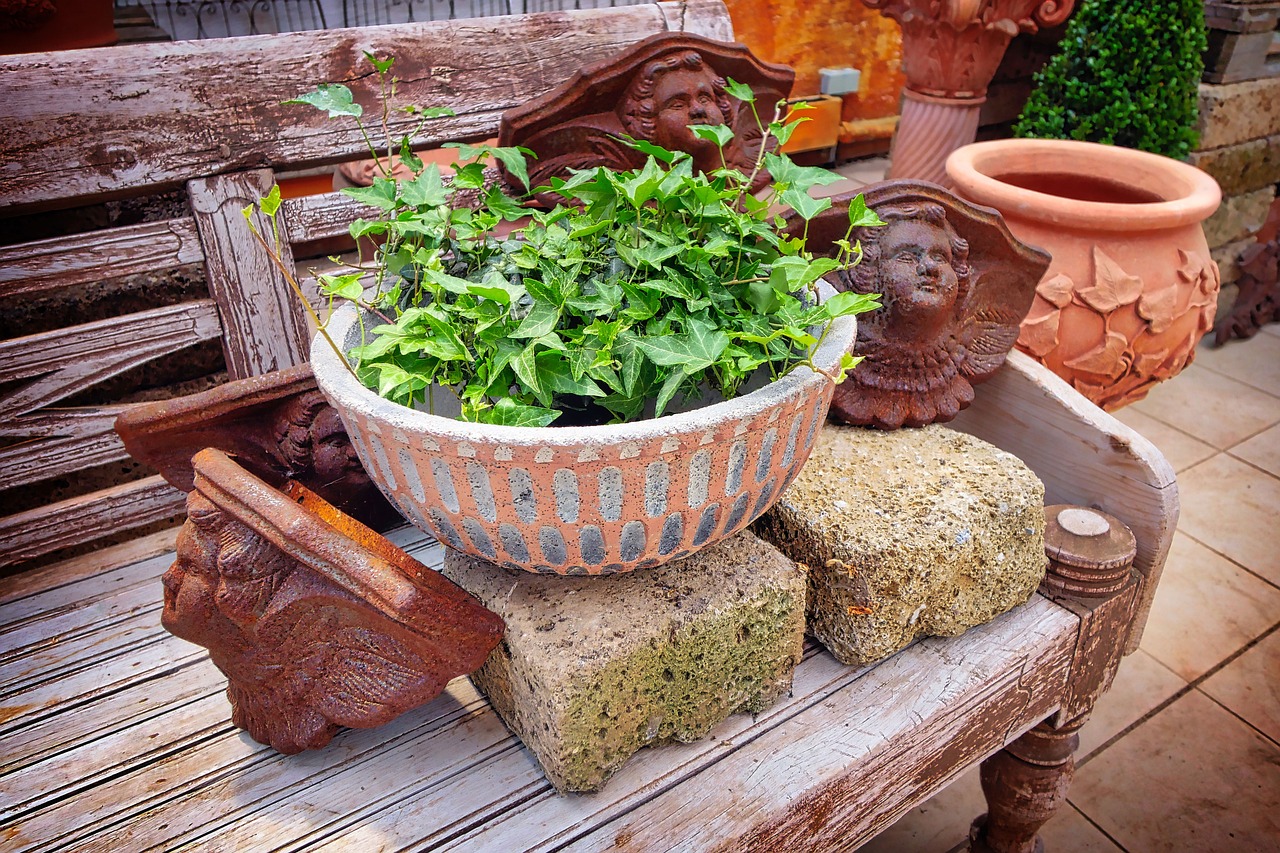
Safety Tips for Kids
When it comes to hosting a pottery party for kids, ensuring their safety is paramount. You want to foster an environment where creativity can flourish without compromising on safety. So, what are some essential safety tips to keep in mind? First and foremost, supervision is key. Always have an adult present to guide the kids, especially when they are using tools or materials that could pose a risk. Kids are naturally curious and may not always understand the potential dangers of certain tools or techniques, so having someone knowledgeable nearby can make all the difference.
Next, it's crucial to teach the children about the proper use of pottery tools. Before diving into the fun, take a moment to explain the tools they'll be using and how to handle them safely. For instance, if they're using a pottery knife or any sharp tools, demonstrate the correct way to hold and use them. Remind them to always cut away from their bodies and to keep their hands clear of the blade. This not only helps prevent accidents but also builds their confidence in using the tools effectively.
Another important aspect of safety is the handling of clay and other materials. Kids should be instructed on how to manage their supplies properly. For example, they should know that clay should be kept on the work surface and not thrown around, as this can lead to slips and falls. Additionally, make sure they understand the importance of washing their hands after handling materials, especially if they are using products that may contain chemicals. Proper hygiene is just as important as safe handling, particularly in a creative setting where kids are likely to get their hands dirty!
Here's a quick overview of some key safety practices to keep in mind during the pottery party:
| Safety Practice | Description |
|---|---|
| Supervision | Always have an adult present to monitor activities and provide guidance. |
| Tool Usage | Teach proper techniques for using pottery tools to avoid injuries. |
| Material Handling | Instruct kids on how to handle clay and other materials safely. |
| Hygiene | Encourage regular hand washing, especially after handling materials. |
Finally, make sure to create a designated workspace for each child. This not only helps keep the area organized but also minimizes the risk of accidents. When kids have their own space, they are less likely to bump into each other or spill materials. Plus, it gives them a sense of ownership over their creative projects, which can be incredibly empowering.
In summary, by prioritizing safety through supervision, proper tool usage, material handling, and hygiene, you can create a fun and secure environment for kids to explore their creativity. Remember, a safe pottery party is a happy pottery party!
To wrap up our article, let's address some common questions that may arise when planning a pottery party for kids:
- What age is appropriate for a pottery party? Generally, kids aged 5 and up can participate in pottery activities, especially with adult supervision.
- Do I need any special skills to host a pottery party? No special skills are required! Just ensure you have the right supplies and a basic understanding of the pottery process.
- How do I clean up after the party? Make sure to have a cleanup plan in place. Provide wet wipes and trash bags for easy disposal of materials.
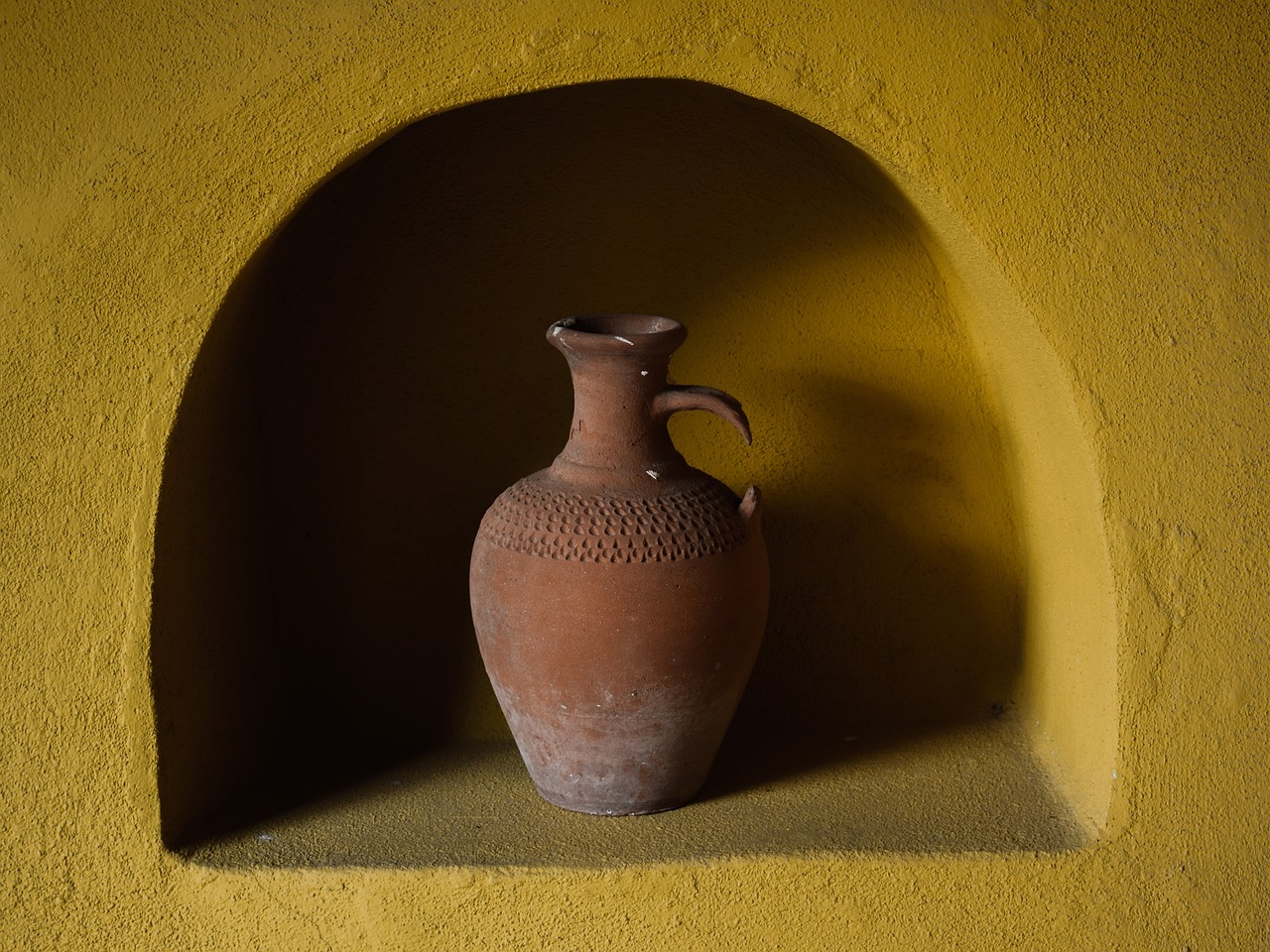
Using Tools Safely
When it comes to pottery, safety should always be at the forefront of your mind, especially when kids are involved. Teaching children how to use pottery tools safely is crucial for ensuring a fun and accident-free experience. It’s not just about having the right tools; it’s about knowing how to use them responsibly. Imagine a group of kids, excited and eager to create, but without the right guidance, the situation could quickly turn chaotic. So, let’s dive into some essential safety guidelines that you can share with your little artists.
First and foremost, supervision is key. Always have an adult present to oversee the pottery-making process. Kids might get a little too enthusiastic, and having someone experienced around can help prevent mishaps. For instance, while using sharp tools like pottery knives or wire cutters, an adult should be there to guide them. This ensures that the kids can focus on their creativity without worrying about safety hazards.
Next, it’s important to demonstrate proper tool usage. Before the kids start working, take a moment to show them how to handle each tool correctly. For example, when using a rolling pin, explain how to apply even pressure and keep their fingers clear of the edges. You can even turn this into a fun activity by having them practice on a piece of scrap clay before moving on to their actual projects. This not only builds confidence but also reinforces the importance of being careful.
In addition to supervision and demonstration, you should also teach kids about personal space. When working in a group, it’s easy for kids to get a little too close to each other, especially when they’re excited. Encourage them to maintain a safe distance while using tools to avoid accidental bumps or injuries. A good rule of thumb is to have a designated workspace for each child, so they have enough room to maneuver without getting in each other's way.
Another vital aspect of tool safety is the correct storage and handling of tools. After the kids are done using their tools, make sure they understand the importance of returning them to their designated spots. This not only keeps the workspace organized but also prevents any accidents from occurring when someone reaches for a tool that’s out of place. You might even consider creating a simple chart that outlines where each tool belongs, making it easy for kids to remember.
Finally, it’s essential to educate kids about first aid basics. Accidents can happen, even in the safest environments. Teach them simple first aid steps, like how to clean a small cut or scrape. Having a first aid kit nearby is also a smart move. This way, you can quickly address any minor injuries that may occur, allowing the fun to continue without too much disruption.
In summary, ensuring safety while using pottery tools is all about preparation, supervision, and education. By implementing these guidelines, you can create a safe and enjoyable pottery party where kids can unleash their creativity without any worries. Remember, safety doesn’t have to be boring; it can be an engaging part of the experience that kids will appreciate as they create their masterpieces!
- What age is appropriate for a pottery party? Generally, kids aged 5 and up can enjoy pottery activities, but it’s important to tailor the projects to their skill levels.
- Do I need to provide aprons or smocks? Yes, providing aprons or smocks can help protect children’s clothing from clay and paint.
- How long should a pottery party last? A pottery party can last anywhere from 1.5 to 3 hours, depending on the projects planned.
- Can we use regular clay or do we need special pottery clay? It’s best to use clay specifically designed for pottery to ensure the best results and safety.
- What if a child doesn’t want to participate? Encourage them gently, but it’s also important to respect their feelings. They can always observe and join in later.
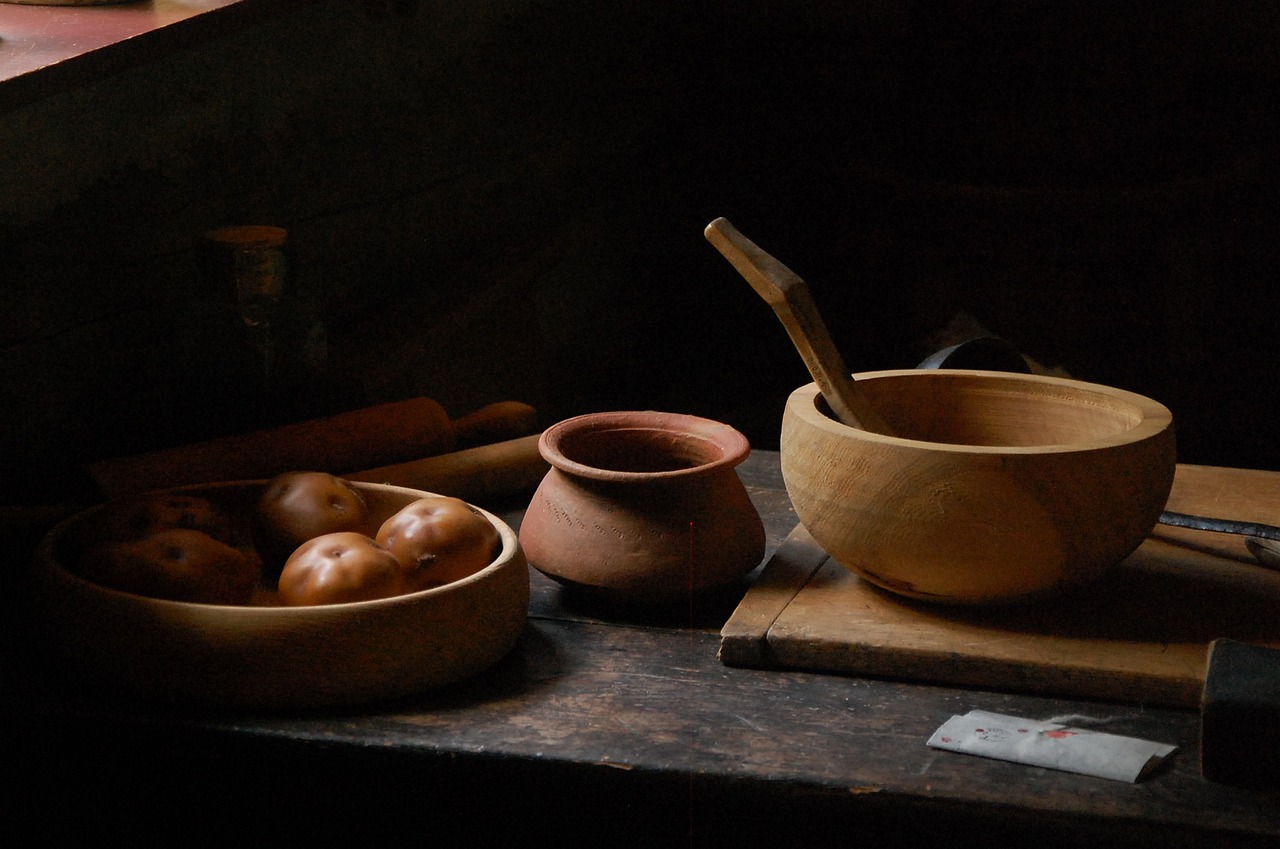
Handling Clay and Materials
When it comes to during a pottery party, safety and technique should be at the forefront of everyone’s mind. Kids are naturally curious and enthusiastic, which is fantastic for creativity but can sometimes lead to accidents if they’re not careful. Therefore, it’s essential to establish some ground rules before diving into the fun. One of the first things to teach the children is the importance of keeping their workspaces clean and organized. A clutter-free environment not only enhances creativity but also minimizes the risk of spills and accidents.
Before the party starts, prepare the workspace by laying down some protective coverings, such as old newspapers or plastic sheets. This will make cleanup easier and protect surfaces from clay stains. Additionally, ensure that all tools and materials are within reach but stored safely to avoid any mishaps. Here’s a quick checklist of best practices for handling clay:
- Wash Hands: Always wash hands before and after handling clay to prevent contamination.
- Use Tools Properly: Teach kids how to use tools like rolling pins, cutters, and sculpting tools safely. Supervision is key!
- Store Materials Safely: Make sure that all clay and tools are stored in a safe place when not in use to avoid any accidental injuries.
- Monitor Allergies: Check for any allergies to materials used, especially with certain types of clay or glazes.
Another important aspect is to educate kids about the different types of clay and how to handle them properly. For instance, air-dry clay is generally easier to manage than polymer clay, which requires more precise handling due to its unique properties. Encourage children to work in small sections, as this not only makes the process more manageable but also allows them to focus on details without becoming overwhelmed.
Moreover, remind the kids that clay can be a bit messy, and that’s part of the fun! Encourage them to embrace the process and not worry too much about getting their hands dirty. It’s all about the creative experience! However, it’s essential to have cleaning supplies on hand, such as wet wipes or damp cloths, to help them clean their hands and work surfaces as they go along.
Finally, ensure that all leftover clay and materials are disposed of properly. Teach the kids about recycling clay scraps, as they can often be reused for future projects. Not only does this promote sustainability, but it also instills a sense of responsibility in the young artists. By following these guidelines, you can create a safe and enjoyable atmosphere for everyone involved, allowing the kids to unleash their creativity without any worries!
Here are some common questions that may arise when organizing a pottery party for kids:
- What age is appropriate for a pottery party? Generally, kids aged 5 and up can enjoy pottery activities, but ensure that the projects are age-appropriate.
- How long should a pottery party last? A typical pottery party can last anywhere from 1.5 to 3 hours, depending on the complexity of the projects.
- Can we use regular clay? It’s best to use air-dry or polymer clay for kids’ parties, as they are easier to handle and don’t require firing in a kiln.
- How can I ensure the kids stay engaged? Incorporate games, challenges, and group projects to keep the energy high and everyone involved.
Frequently Asked Questions
- What age group is suitable for pottery parties?
Pottery parties are typically great for kids aged 5 and up. However, younger children can also enjoy simple clay activities with proper supervision. The key is to tailor the projects to the children's skill levels and interests!
- Do I need to provide all the supplies for the pottery party?
While it's ideal to provide the essential supplies, you can also ask parents to contribute certain items. Just make sure to communicate clearly about what you’ll provide and what they can bring to ensure a smooth experience!
- How long should a pottery party last?
A pottery party usually lasts between 1.5 to 2.5 hours. This timeframe allows enough time for kids to create their projects, engage in activities, and enjoy some snacks or refreshments without feeling rushed!
- What types of clay are best for kids?
Air-dry clay and polymer clay are both excellent choices for kids. Air-dry clay is easy to work with and doesn't require a kiln, while polymer clay offers vibrant colors and can be baked at home to set the creations!
- How can I ensure safety during the pottery party?
Safety is crucial! Make sure to supervise the kids closely, teach them how to use tools properly, and provide safety gear if necessary. Also, educate them on handling clay and materials safely to prevent any accidents!
- Can I customize the pottery projects for the party?
Absolutely! Customizing projects based on the kids' interests can make the party even more engaging. You could choose themes like animals, nature, or even their favorite characters to inspire creativity!
- What engaging activities can I include in the pottery party?
Incorporating fun activities like pottery relay races or artistic challenges can keep the kids entertained and foster teamwork. These games not only make the party lively but also encourage creativity and collaboration!
- How do I clean up after the pottery party?
Cleaning up after a pottery party can be easy with a bit of planning. Have trash bags and containers ready for leftover materials, and encourage kids to help tidy up their work areas. This way, everyone pitches in, and it teaches responsibility!



















